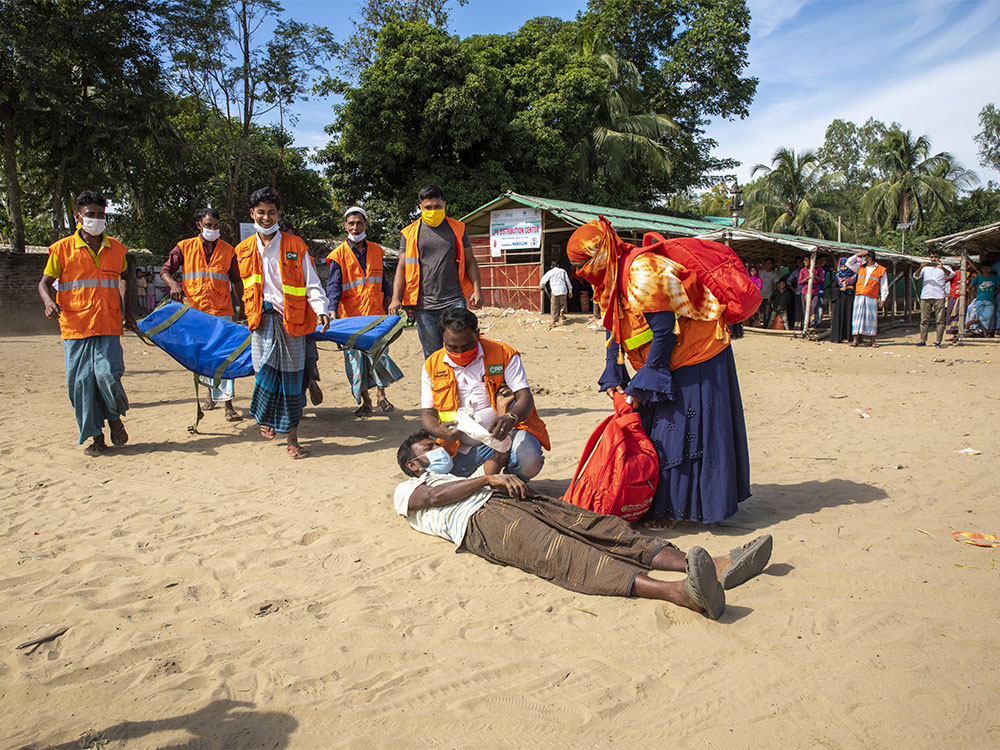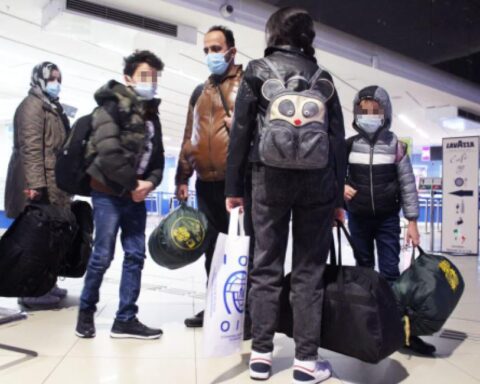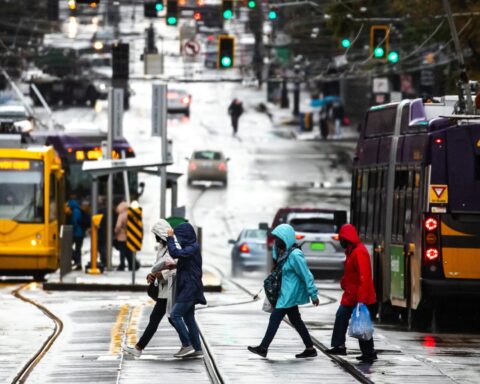Cox’s Bazar – As it has in the past, the International Organization for Migration (IOM) is helping communities in Bangladesh prepare for and respond to the cyclones that are a feature of the monsoon by strengthening infrastructure, preparing for possible medical emergencies and providing cyclone preparedness training to dozens of new volunteers.
“When the rains hit, an emergency situation will be inevitable,” said Manuel Marques Pereira, IOM Deputy Chief of Mission in Bangladesh.
“It is crucial we work together now to mitigate the risks before the disaster occurs. We need to be able to respond swiftly and effectively during such crises.”
Cox’s Bazar is one of the most disaster-prone districts in the country, subject to cyclones, monsoons, strong winds, floods, landslides and other natural hazards. These disasters can cause mass casualties, disrupt humanitarian access, and severely damage shelters and other critical facilities.
Special attention has been given to refugees currently hosted in the three camps gutted by a devastating fire in March. Close to 50,000 refugees displaced by the fire live in tarpaulin shelters on unstable slopes, which will quickly turn to mud when the rains arrive.
More than 4.4 million people were displaced by storms and floods in Bangladesh in 2020, many of whom were pre-emptively evacuated and are unable to return home. These are the highest displacement figures recorded for Bangladesh since data became available in 2008.
This year, IOM is assessing the risk of landslides, strengthening drainage networks, installing slope protection measures and upgrading key pathways.
Landslides and mud could cause road closures and blockages of major drains and waterways so IOM teams and machines are on standby to help humanitarian and government agencies clear the debris to keep vital access routes open.
They are also engaged in tie-down activities, preparing the stock of emergency shelter kits and supporting actors with site planning and shelter improvements. Protection staff stand ready to assist extremely vulnerable individuals, including women and children, who need tailored assistance or relocation support.
Such catastrophes can result in acute medical emergencies requiring immediate first aid and resuscitation, trauma management, referrals and psychosocial support. Four primary health-care centres and six health posts have been supplied with mass casualty incident kits.
IOM and its implementing partners have also trained and equipped 10 mobile medical teams and 350 community health workers to act as first responders, while 11 ambulances are ready to respond.
In close collaboration with local authorities, IOM supports early warning systems for host communities. A total of 1,655 volunteers have been trained to respond to cyclones and 20 multi-purpose shelters have been made accessible for emergency evacuation.
Thousands of refugees and host community members have received search and rescue and first aid training, with support from the Bangladesh Fire Service and Civil Defence Department. They will act as community focal points in emergency situations, spreading early warning messages and helping the frontline response.
IOM and its partners have trained an additional 100 volunteers in each camp on cyclone preparedness and the flag warning system. The volunteers are now disseminating awareness-raising messages to community members and responding to community requests.
“It is vital to inform and support our fellow community members, so they are ready to respond and protect themselves and others when the weather conditions worsen,” said Abdul, one of the volunteers.
Additionally, masks and hand sanitizer are readily available, and personal protective gear – including search and rescue kits, first aid kits and life vests – has been provided to all volunteers in fire-affected camps.






